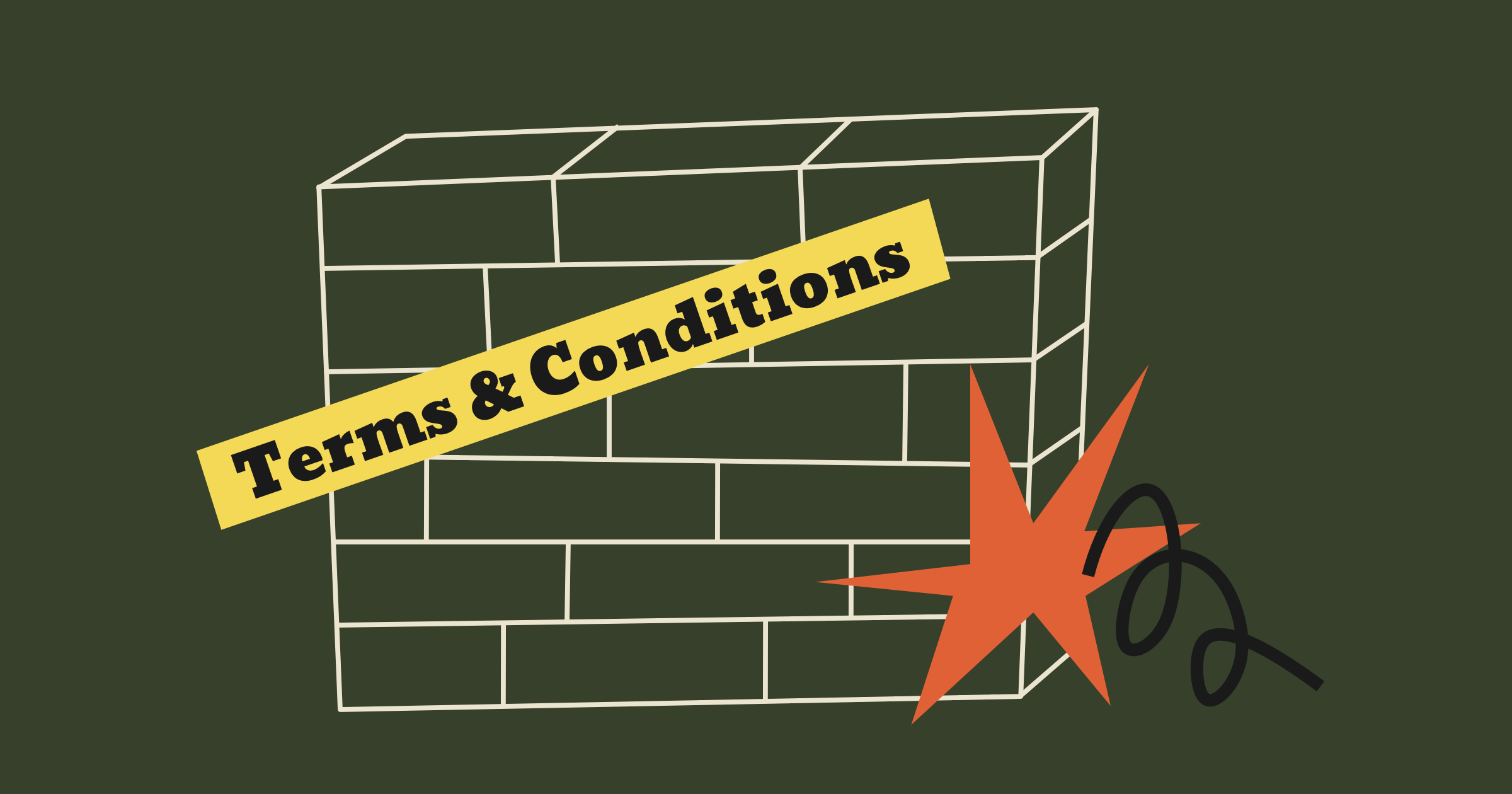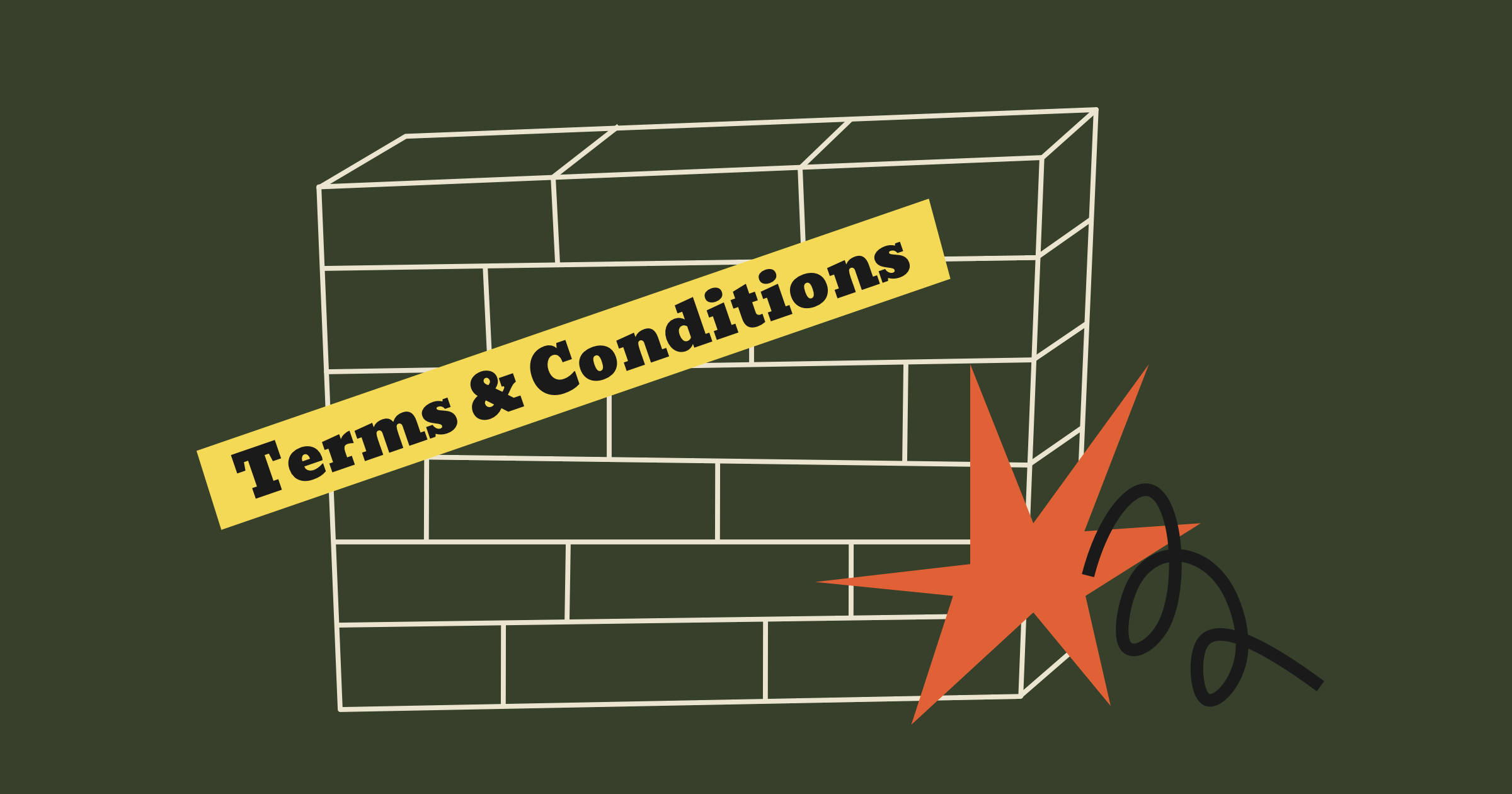
If your proposal is the car, the terms and conditions (T&Cs) are its seatbelts. Even if you win the deal, without appropriate T&Cs you are taking a considerable risk if something goes wrong.
Writing terms and conditions is not that difficult. In fact, you are merely outlining the details concerning:
- Who is responsible for what
- How long it will take
- What happens when some changes are made
- How much it will cost
Terms and conditions can help you avoid any uncertainty regarding the execution of the project or deal. Moreover, they ensure that you and your client are on the same page while also reducing the risk of conflicts and differing expectations.
You need to make sure that the terms are clear with little room for contradictory interpretations.
While the proposal can cover various vital concerns, there are also fundamental issues that you need to deal with:
- Who is hiring whom, the purpose of the hiring, the project duration, and the cost
- What the two parties have agreed to, with a clear statement as to their respective responsibilities
- The specific details of the project and what is not included
- What to do if someone changes their mind or wants to cancel
- A clear understanding of the liabilities and other legal matters
Some people are hesitant to include T&Cs up front if the clients have not signed up yet. They instead include them in a separate document, such as the confirmation of works. This is not a viable way to form a contract as the client must be aware of all the conditions relating to the works before they sign up otherwise it is not legally enforceable. If terms and conditions are well written and fair, your clients will not be put off by your terms, but instead be reassured that they are dealing with a professional company and both parties’ interests are protected.
Use simple words and define them
Everyone involved in the contract must understand the terms and conditions. This may not be a straightforward concept as, inevitably, some legal and business terminology will be included in the document. So, in order to avoid any misunderstandings or confusion, make sure you define any ‘difficult’ words or phrases. You should also keep the language simple and easily accessible.
Include the following:
1. The price and payment method
Your proposal must include the final price. You should also include a payment schedule that your client can follow. Besides the price, consider adding other critical items such as the taxes payable. Furthermore, you should also incorporate a provision regarding non-payment.
2. Privacy issues
You can bolster your client’s confidence by including a privacy statement. You need to assure them that you won’t sell, share or rent their information to any other entities. Provide them with details about how you will protect their data both online and offline.
3. Intellectual property rights
Once you have provided your clients with something valuable, they will want to claim ownership over that property. Therefore, you need to make sure that you mention that you are assigning all the rights, interests or intellectual properties developed in the project. However, make it clear to the client that they won’t have ownership over the IP unless the invoice is fully paid. Some companies prefer to keep the IP in their work, and instead give to their clients a licence to use the work for their own purposes, if this is the case you need to be clear on any restrictions on that licence, and what they can use it for.
4. Sharing of work
To increase your business, you will often provide prospective clients with examples of your work, such as case studies or portfolios. While many of your clients will be okay with this type of promotion, others may have reservations due to security and competition concerns. To avoid any misunderstanding, consider adding a clause which specifies whether the work will be included in such promotions.
5. Provisions for any changes
There is always the possibility that clients may change their mind with regard to the project. It is crucial that you include details about what will happen if the project is changed partway through.
You need to include:
- How requests for changes will be agreed
- Who is responsible for the changes
- How it can be handled within the budget or what charges shall be imposed as additional
- Allowable adjustments to the timeframes
- Implications for the project if the changes are agreed
It is essential that your T&Cs cover these details from the outset as they will manage the expectations of both parties and keep everyone focused on the goals.
6. Cancellation clauses
A client may decide to cancel the project even if the contract has been signed and approved. Naturally, such a negative outcome could cost you money, especially if you have started the work. As a result, it is vital that you protect yourself.
Your T&Cs can specify:
- How much notice is required to cancel the contract
- The implications of stopping the project
- What happens to the deposit and if there are other fees involved in cancellation
7. Fees for delay or termination
Other problems can arise even if the contract has been agreed. As an example, perhaps in the middle or towards the end of a project, the client stops communicating or just disappears. Despite your repeated emails and calls, you receive no response from them. So, you shelve the project as it cannot go forward without confirmation from the client. However, after some time, the client suddenly sends an email asking when you can launch the project.
To prevent such a scenario from occurring, your contract should state what will happen if the client delays the project. You may require full payment for the works despite their incompletion.
They may need to pay a certain sum or undergo a specified waiting period before you resurrect a dormant project. You may not be able to continue where you left off and they may have to pay to start the project again. Regardless of your scenario, it needs to be clear from the outset.
8. How to address errors or omissions
Mistakes occur in all sorts of situations so you must ensure that your proposal covers you legally so that you cannot be sued for:
- Making errors
- Failing to take actions
- Project delays that can cause lost profits or damages
- Failure by the client to proofread or check the works
- Underlying issues with the site or materials provided by the client
Some clients may not like adding these clauses. However, it is essential that you at least have some protection in case of any oversights.
9. Hiring a legal expert or lawyer
As you will be dealing with legal documents to cover the project, you should consider hiring a lawyer or legal expert for your contracts and T&Cs. Or, if you already have one, they could perhaps take a look and ensure that all your documents are legally compliant.
Conclusion
Before asking a client to sign the terms and conditions, you should make sure that you explain the details to them. Sometimes, people sign legal documents without thoroughly reading or understanding their content. Furthermore, don’t begin work on the project until the contract has been agreed. If the client agrees to your proposal, they should agree to the terms and conditions as well. Some clients may insist on commencing the project without having a signed contract. However, that is a path that you should never take.
Looking For Document Management System?
Call Pursho @ 0731-6725516
Check PURSHO WRYTES Automatic Content Generator
https://wrytes.purshology.com/home
Telegram Group One Must Follow :
For Startups: https://t.me/daily_business_reads




